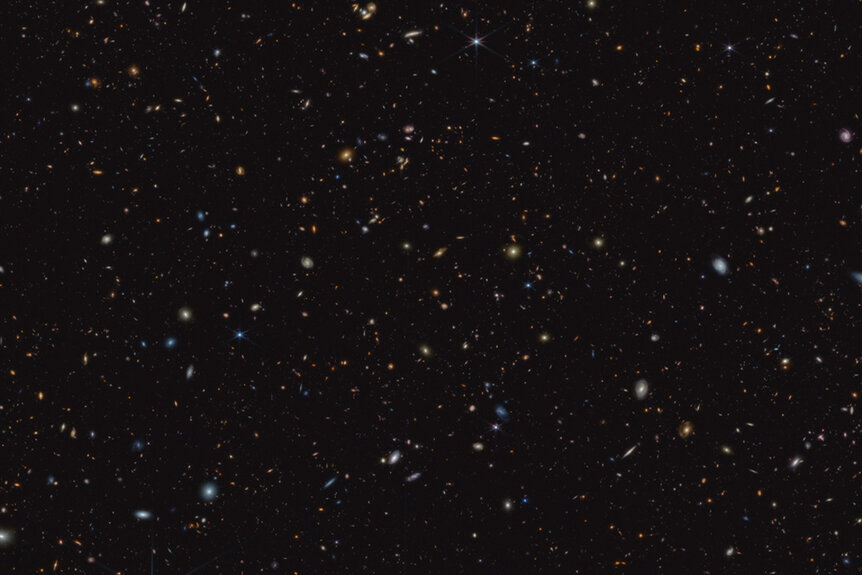Create a free profile to get unlimited access to exclusive videos, sweepstakes, and more!
NASA’s JWST Reveals 700 Galaxies from the Early Universe
These are among the earliest galaxies in existence.

In 1989, Dr. Sam Beckett (Scott Bakula) jumped into his Quantum Leap machine in a last ditch effort to save his research program. His machine worked, and Beckett was dumped in a seemingly random point in time (always during his own lifetime) where he had to solve some problem to correct the timeline and, hopefully, return home. After five seasons (spoiler alert), Beckett never does return home and his ultimate fate remains unknown.
Thirty years later, the program was revived in NBC's updated Quantum Leap (streaming now on Peacock) with a new cast of characters and new technology. This time it’s Dr. Ben Song (Raymond Lee) who is swept into the machine and lost in the past. Quantum Leap offers its brand of time travel, complete with unwanted side effects, and astronomy offers another. While peering into the past through a telescope isn’t quite as visceral as inhabiting another person’s body in the moment, it does have its own benefits. Over the last year, NASA’s James Webb Space Telescope (JWST) has uncovered more than 700 galaxies from one of the earliest periods of the universe.
JWST Peering Farther Than Ever Before
One of the JWST’s primary science objectives is the JWST Advanced Deep Extragalactic Survey (JADES), intended to seek out and characterize faint, distant galaxies. In the first year of the telescope’s life, it devoted about 32 days of telescope time to that endeavor and it’s going gangbusters. So far, the JADES program has discovered hundreds of galaxies, all dating to when the universe was less than 600 million years old.
RELATED: Watch as a Million Galaxies Form in the First Billion Years of the Cosmos
For the first few hundred million years after the Big Bang, the universe was filled with a foggy haze that blocked out all light. By about a billion years after the Big Bang, that haze had lifted, and the universe became transparent in a process known as reionization. It is unclear precisely when that happened or what processes might have driven the transition, but it’s something astronomers hope the JWST can help them figure out. Historically, astronomers have debated whether reionization was driven by star formation or supermassive black holes. To find out, astronomers used the telescope’s Near-Infrared Spectrograph (NIRSpec) to look for spectral signatures of star formation in regions dating to near the epoch of reionization. They found a lot of them.
“Almost every single galaxy that we are finding shows these unusually strong emission line signatures indicating intense recent star formation. These early galaxies were very good at creating hot, massive stars,” said Ryan Endsley, an astronomer from the University of Texas at Austin, in a statement.
As early stars shed UV radiation into the surrounding space, they ionized atoms in nearby gases, converting them from opaque to transparent. Because the JWST observations show such a high proportion of hot, massive stars, it seems probable that they were the primary cause of reionization. The universe turned on a couple of lights (we’re using “couple” very loosely) and the room cleared out.
RELATED: What Is Powering the Largest Explosion Since the Big Bang?
“Previously, the earliest galaxies we could see just looked like little smudges. And yet those smudges represent millions or even billions of stars at the beginning of the universe. Now, we can see that some of them are actually extended objects with visible structure. We can see groupings of stars being born only a few hundred million years after the beginning of time,” said Kevin Hainline, an astronomer from the University of Arizona in Tucson.
Before the JWST, astronomers had only uncovered a few dozen galaxies from this period of cosmic history and the images lacked clarity. Now we’ve got several hundred notches on our proverbial bedpost and counting.
If you like your time travel a little closer to home, catch Quantum Leap, streaming now on Peacock!



























